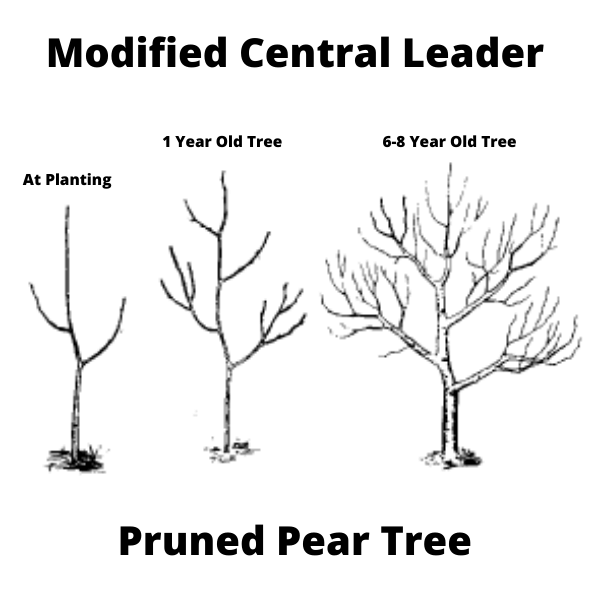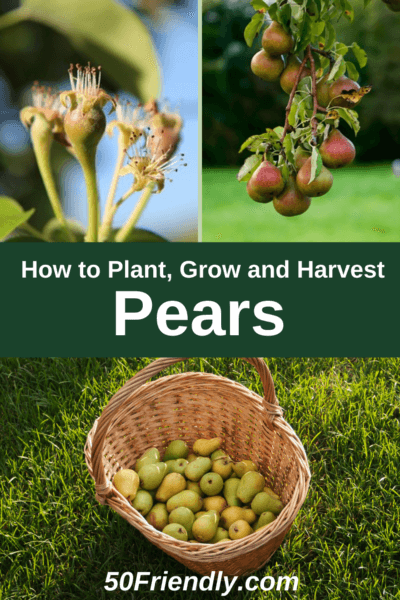PEARS – How to Plant, Grow, And When to Harvest
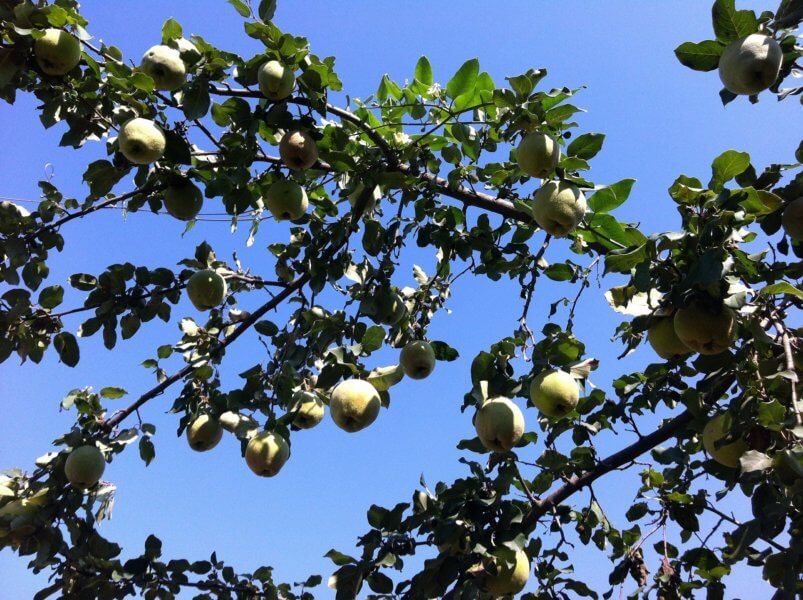
How to Grow Pear Trees – the Easy Way
“A pear-tree planted nigh: ‘Twas charg’d with fruit that made a goodly show, and hung with dangling pears was every bough.”
Alexander Pope
Pears – How to Plant, Grow, and When to Harvest. Growing pears is similar to growing apples – give them some TLC like sun and water, a neighboring tree to cross-pollinate with, pest control, and pruning, and they will reward you with delicious juicy fruit year after year.
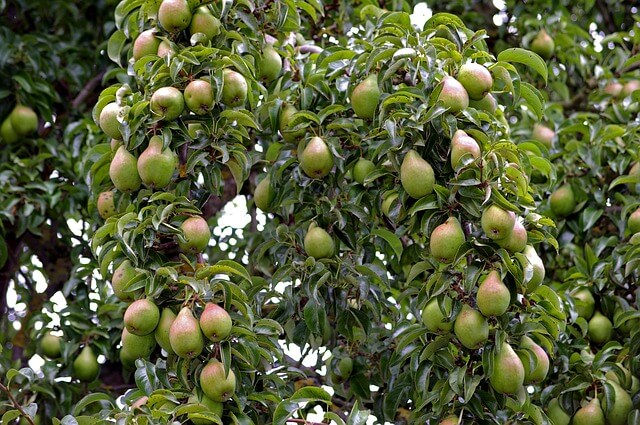
When we purchased our property in Washington State, we inherited 2 orchards filled with fruit trees. Today we have 3 Bartlett pear trees, 1 D’Anjou, and 1 Bosc, which suffices to say – we have a lot of pears every year. I preserve, can, store, toss to the deer, and give a lot of fruit away to friends as this many pears (now that the kiddos have moved away) is way too much for just me and hubs.
So from D’Anjou to Bartlett, to Bosc – if these are fruits you’ve always wanted to grow, simply follow the guidelines and tips below and you should have a nice yield of pears in the fall. It’s worked for me all these years. Happy Gardening
PLANTING NEW PEAR TREES
When is the best time to plant pear trees?
The best time to plant pear trees is in the spring. But if you live in an area where fall and winter weather is mild and moist, planting in the fall can be very successful as well.
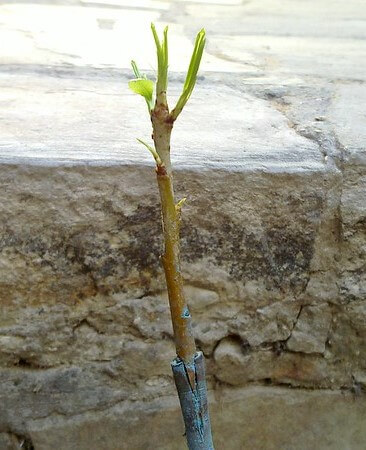
Have some patience with newly planted pear trees and it will take anywhere from 3 to 10 years to flower and produce fruit. Although you may get fruit sooner with Anjou, Harrow Sweet, or Moonglow.
Where to plant pear trees?
The best exposure for pears is a north side of a house or the north side of your orchard, where they will get full sun. Space them 20 to 25 feet apart – dwarf pear trees can be spaced 12 to 15 feet apart. Planting apple or pear trees close together will benefit the trees and not take up as much space in your yard or orchard.
How to plant pear trees?
Once you purchase the tree, protect it from injury, drying out, freezing, or overheating. If the roots have dried out, you’ll need to soak them in water for 24 hours before planting.
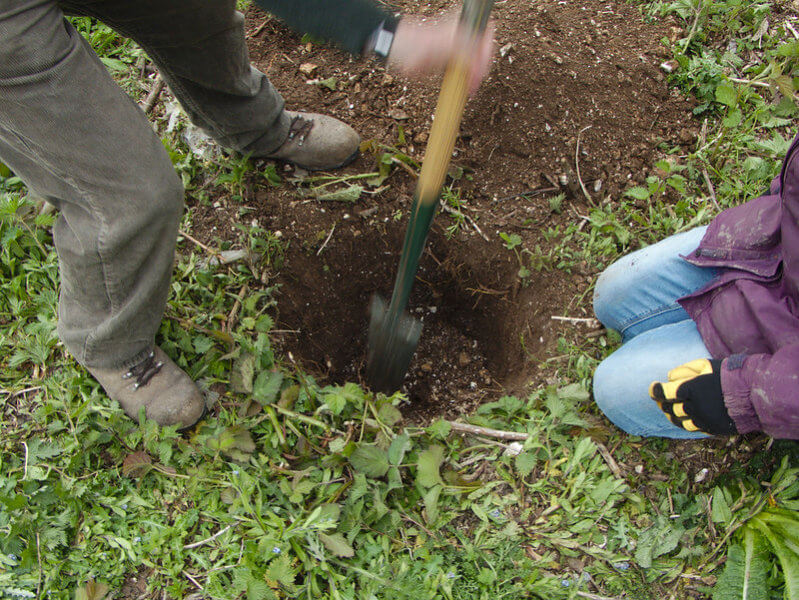
Remove all weeds and the grass in a 4-foot diameter circle. Dig a hole 2 feet deep and twice the diameter of the root system, and lay some loose soil on the bottom and around the inner circle. Place your tree in the hole and make sure the grafted union of the tree is at least 2 inches above the soil line.
Spread the tree roots on the loose soil and add soil around the roots. As you add the soil, firm it around the roots to remove air pockets. Do not add any fertilizer to the hole or roots as you may cause them to burn. Give it a good watering at planting, and then deep watering twice a week during its first year.
Can you plant just one pear tree?
Plant at least two compatible (compatible meaning they bloom at the same time) as they will need to cross-pollinate to produce fruit. Anjou, Kieffer, and Bartlett are partially self-pollinating. But if you want more fruit, pair them with another of the same kind.
COMPATIBLE PEAR VARIETY FOR CROSS-POLLINATION
Which pear trees are compatible with each other?
PEAR TREE CARE
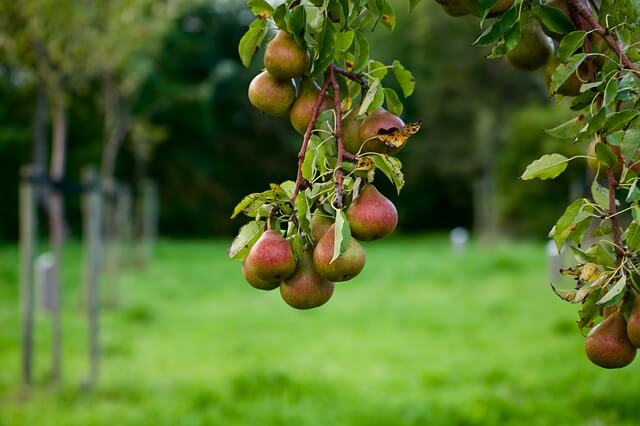
When to start fertilizing pear trees.
For young pear trees, fertilize early in the year with a 1/2 cup of well-balanced 13-13-13 fertilizer. Spread it in a circle that is 6 inches from the trunk and ends two feet from the tree. For established pear trees, choose a low-nitrogen or balanced 10-10-10 formula. Too high nitrogen will only promote rapid growth of leaves and branches and you’ll get fewer blossoms and fruit.
Should I spray my pear tree?
Use dormant oil three times – once in October or November, once in January or February, and then lastly in March before buds open. Dormant oil sprays are mixed with water and are used to control aphids, spider mites, and scale. Dormant oils destroy pests by suffocating them.
PRUNING PEAR TREES
Pruning is done annually to help the tree develop a strong framework to a size and shape of your liking. It is also necessary to maintain tree health and to increase fruit production for your orchard. The best time to prune the tree is in the winter or very early spring.
In order to get flower buds and then fruit, all the branches of a pear tree should get sunlight. Remove all dead or diseased wood, weak branches, water sprouts, and root suckers. Cut back the top portion of the tree to maintain good tree height.
Standard-size trees can use either the central leader system or a modified leader system, which is most common. Prune dwarf pear trees around a central leader system.
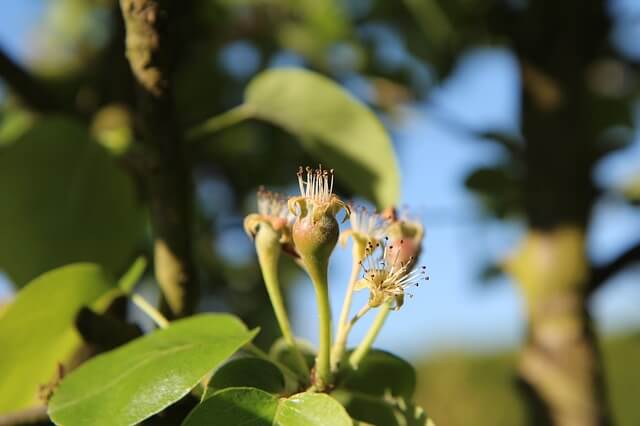
How to identify growth buds and flower buds on an apple tree.
A GROWTH BUD produces a branch but no fruit. They are much smaller than flower buds, grow tight into the branch or stem, and are slender and more pointed. Prune above the growth buds to shape the tree.
A FLOWERING BUD will produce a flower which then becomes an apple. These buds are larger, plumper than growth buds, and grow on spurs which are short, stubby branches where the fruit is produced. Prune the flower buds to adjust the yield of the tree.
WHEN TO HARVEST PEARS
When to harvest pears – how to know when pears are ready to be picked.
Pears should be harvested when they are mature but before their peak of ripeness. A couple of ways to test is by:
1) Take the pear in your hand while still on the tree and lay it horizontally. If it’s ready to harvest it will come off easily. If it doesn’t, then the pears are not ready to be picked.
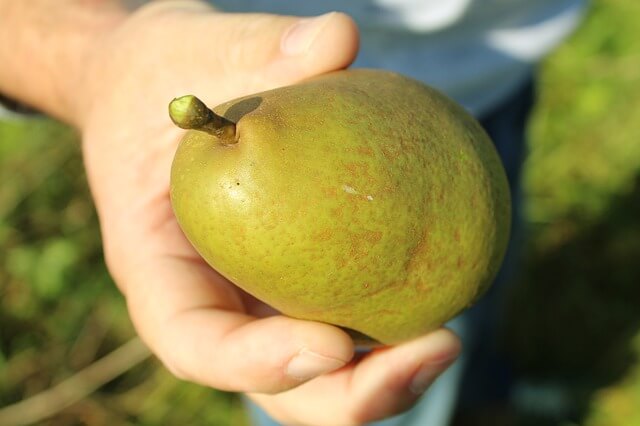
2) You can also test for ripeness by gently pressing near the stem end. If it gives slightly, it’s most likely ready to be eaten.
One thing about pears is that they don’t ripen on the tree. And if you leave the fruit on the tree too long, they will begin to rot from the inside out and will be mushy and mealy. So pick them before they reach their full size.
They will need a good week to ripen once picked from the tree. Place them in a room that’s between 65 and 72 degrees.
HOW TO STORE PEARS
Barlett Pears can be kept for one to two months in a refrigerator that has temps between 30 and 32 degrees.
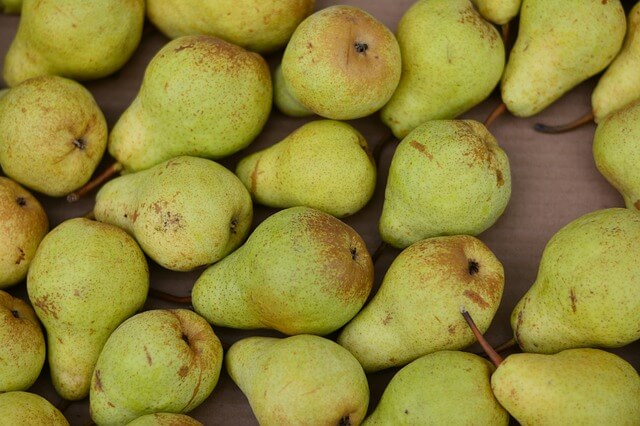
Winter varieties like Anjou, Bosc, and Comice require four to eight weeks of cold storage before they’re ripened, which can be done in an unheated garage or a cold storage room with temperatures around 50 degrees. This allows the fruit to ripen and gives them better texture and flavor.
1) Spread the pears out in crates or on shelves, without them touching each other.
2) Ensure that air circulates well around the pears.
3) Store the crates in the dark, away from moisture.
And there you have it, the low down on Pears – How to Plant, Grow, and When to Harvest. I hope you find the above information useful, and with your efforts may your trees produce an abundance of pears in the future. Enjoy 🙂 AND AS ALWAYS – HAPPY GARDENING
